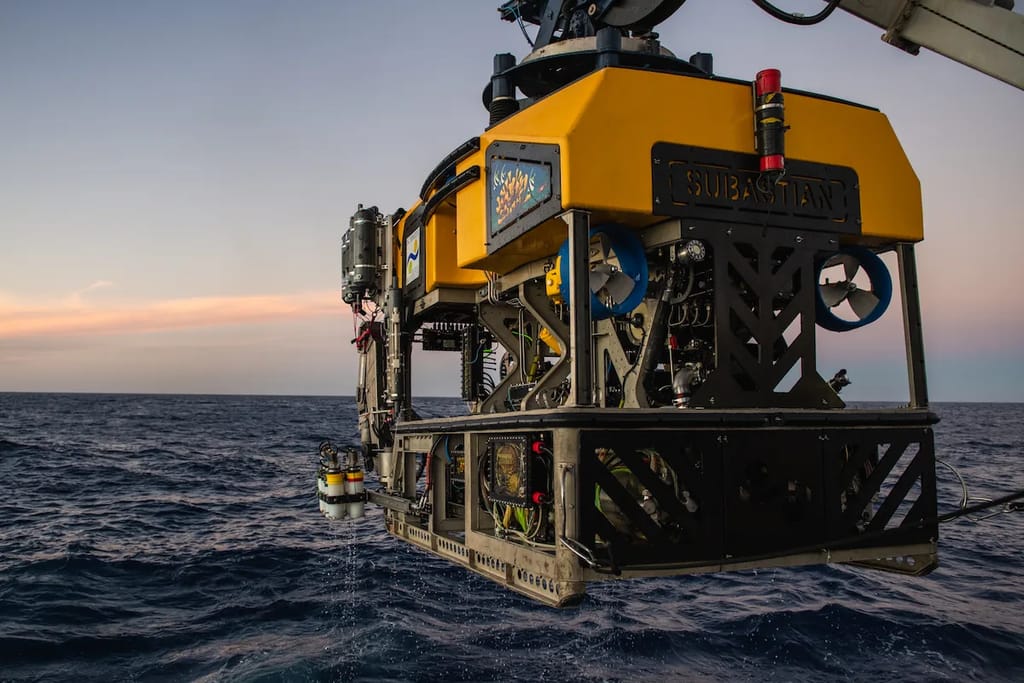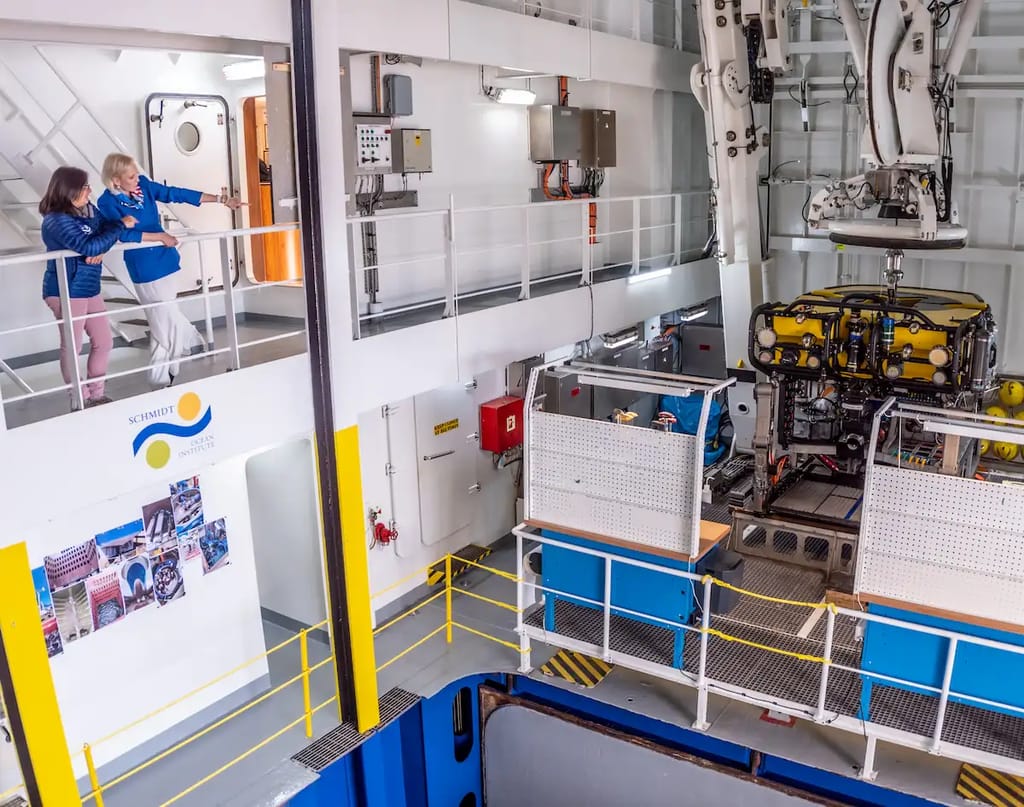Do you ever wonder how scientists study the deep sea? Exploring our ocean’s deepest places is not an easy feat. The average ocean depth is 2.3 miles—much deeper than the recreational SCUBA limits of 120 feet. Even the deepest SCUBA dive ever recorded, 1,090 feet, is less than 10% of the way to the average ocean depth.
Instead, scientists rely on advanced technology that can withstand the crushing pressure and temperatures of the deep sea, including remotely operated vehicles (ROVs) and autonomous underwater vehicles (AUVs). We’ve come a long way since the first deep sea expedition on the HMS Challenger in the 1870s, and our technology continues to improve all the time.
Never miss an update
Enter your email and never miss an update
<!– –>
To use this deep-sea technology, scientists need a way to get it to the deep sea! They also need a way to eat, sleep and operate the technology while they’re there. That’s where research vessels come in.
Schmidt Ocean Institute recently announced the inaugural voyage of their new deep-sea research vessel, the Falkor (too). Their previous research vessel, the original Falkor, launched in 2013 and allowed scientists to document exciting finds like the deep sea hydrothermal vents, see-through glass octopuses and potentially the world’s longest animal.

if(typeof window.oc_media_credits === ‘undefined’) {
window.oc_media_credits = {};
}
window.oc_media_credits[68066] = “Alex Ingle / Schmidt Ocean Institute”;
The Falkor (too) boasts some impressive features, including a 150-ton crane, two moonpools (which allow researchers to lower large tools like ROVs into the sea), a microplastic flow-through system and an 1,130 square feet main laboratory.
The new vessel will get its feet wet (so to speak) with an inaugural expedition to the Mid-Atlantic Ridge this March. There, a team of more than 20 scientists will study hydrothermal vents—strange systems that form when magma-heated water escapes from inside the earth through cracks in the seafloor. Although inhospitable to most, the vents’ toxic plumes and crushing pressures are home to organisms that we’re just beginning to understand.

if(typeof window.oc_media_credits === ‘undefined’) {
window.oc_media_credits = {};
}
window.oc_media_credits[68067] = “Ben Gibbs / Schmidt Ocean Institute “;
The Falkor (too) joins a growing international fleet of deep-sea research vessels, including OceanX’s OceanXplorer, Ocean Exploration Trust’s EV Nautilus and NOAA’s Okeanos Explorer. The latter two vessels, along with the Falkor (too), are part of NOAA Ocean Exploration’s Deep Ocean Education Project, which provides free ocean science education materials (including some very cool high-resolution videos) to people around the world.
I’m sure I speak for all when I say I can’t wait to see what exciting ocean discoveries come from this new research vessel. In the meantime, wishing all scientists, crew and staff a safe and successful inaugural voyage!
Learn more about Schmidt Ocean Institute.
The post Peek Inside a Deep-Sea Research Vessel appeared first on Ocean Conservancy.

